Introduction
In the rapidly evolving landscape of e-commerce, businesses are constantly seeking ways to differentiate themselves and foster deeper connections with their customers. Two powerful strategies that have emerged are customization and personalization, each offering unique advantages and challenges. Customization allows customers to modify products to meet their specific needs, creating a sense of ownership and uniqueness.
Personalization, on the other hand, leverages data and algorithms to tailor the shopping experience automatically, enhancing engagement and satisfaction by anticipating customer preferences.
Understanding the fundamental differences between these approaches is crucial for businesses aiming to implement effective e-commerce strategies. Customization empowers the customer to make decisions, resulting in products that are unique to their tastes, while personalization is driven by the business's understanding of customer behavior, offering a seamless and intuitive shopping journey.
Both strategies offer significant benefits—customization can command premium prices and foster loyalty, while personalization enhances user experience and drives conversion rates. However, choosing between them requires careful consideration of target audiences, product types, and overall marketing goals. Balancing these approaches can lead to an optimal user experience, meeting diverse customer needs and encouraging long-term loyalty.
Definition and Explanation of Customization
Customization in e-commerce involves allowing buyers to modify products or services to fit their specific needs or preferences. This can range from altering the design, features, or even the functionalities of a product. For example, a clothing retailer might provide options for buyers to select fabric, color, and style, resulting in a unique garment tailored to the individual purchaser's specifications.
In the realm of digital commerce, customization is key. As per a Gartner® Report, developing a setting that comprehends and predicts client requirements can greatly distinguish organizations. This level of customization isn't just a nice-to-have but a necessity in today's market. As Elizabeth Tobey, head of Marketing, Digital & AI at NICE, emphasizes, “In a world where people carry computers in their pockets (also known as mobile phones), it’s important to meet your customers when and where they want to be met.”
Moreover, AI-powered personalization is revolutionizing how businesses interact with customers. Machine learning algorithms assist in crafting shopping interactions that seem more personal and pertinent, optimizing inventory levels by forecasting demand and minimizing overstock or shortages. This not only ensures the right products are available at the right time but also promotes sustainability by using fewer resources.
Personalization and customization are not just trends but critical strategies for e-commerce success. With only 27% of businesses fully satisfied with their ability to create genuinely tailored customer interactions, there's a significant opportunity for improvement and innovation in this space.
Definition and Explanation of Personalization
Personalization involves customizing the shopping journey for individual users based on their behavior, preferences, and past interactions. This can include personalized product recommendations, targeted marketing messages, and customized content on a website. For instance, an online bookstore may suggest books based on the user's browsing history, creating a more engaging and relevant shopping experience. Personalization is no longer just a nice-to-have feature; it's a critical component of modern e-commerce strategies. Businesses that excel in tailoring experiences, like digital natives, are already witnessing the advantages of establishing deeper digital relationships with their clients. According to the BCG report, there are five commitments of customization that businesses need to fulfill: empower me, know me, reach me, show me, and delight me. These promises, delivered through a blend of human touch and advanced technology, help companies stand out in a crowded marketplace.
The economic impact of personalized strategies is significant. For example, US retail e-commerce sales reached $579 billion in the first half of 2024, with predictions to hit $1.26 trillion by the end of the year. This expansion is partially fueled by efficient customization tactics that enhance client interactions and boost sales. Furthermore, tailoring isn't solely focused on sales; it involves efficiency—rapidly grasping client needs and continuously improving their experience. This rapid adaptability creates a competitive moat that is difficult for others to replicate. As Gartner emphasizes, establishing a true connection through tailored experiences can distinguish businesses, similar to a beloved coffee shop that recalls your order before you mention it.
In summary, tailoring in e-commerce goes beyond mere customization; it involves a strategic effort to understand and meet client needs swiftly. Businesses that adopt this strategy not only improve their client interactions but also gain a competitive edge in the digital marketplace.
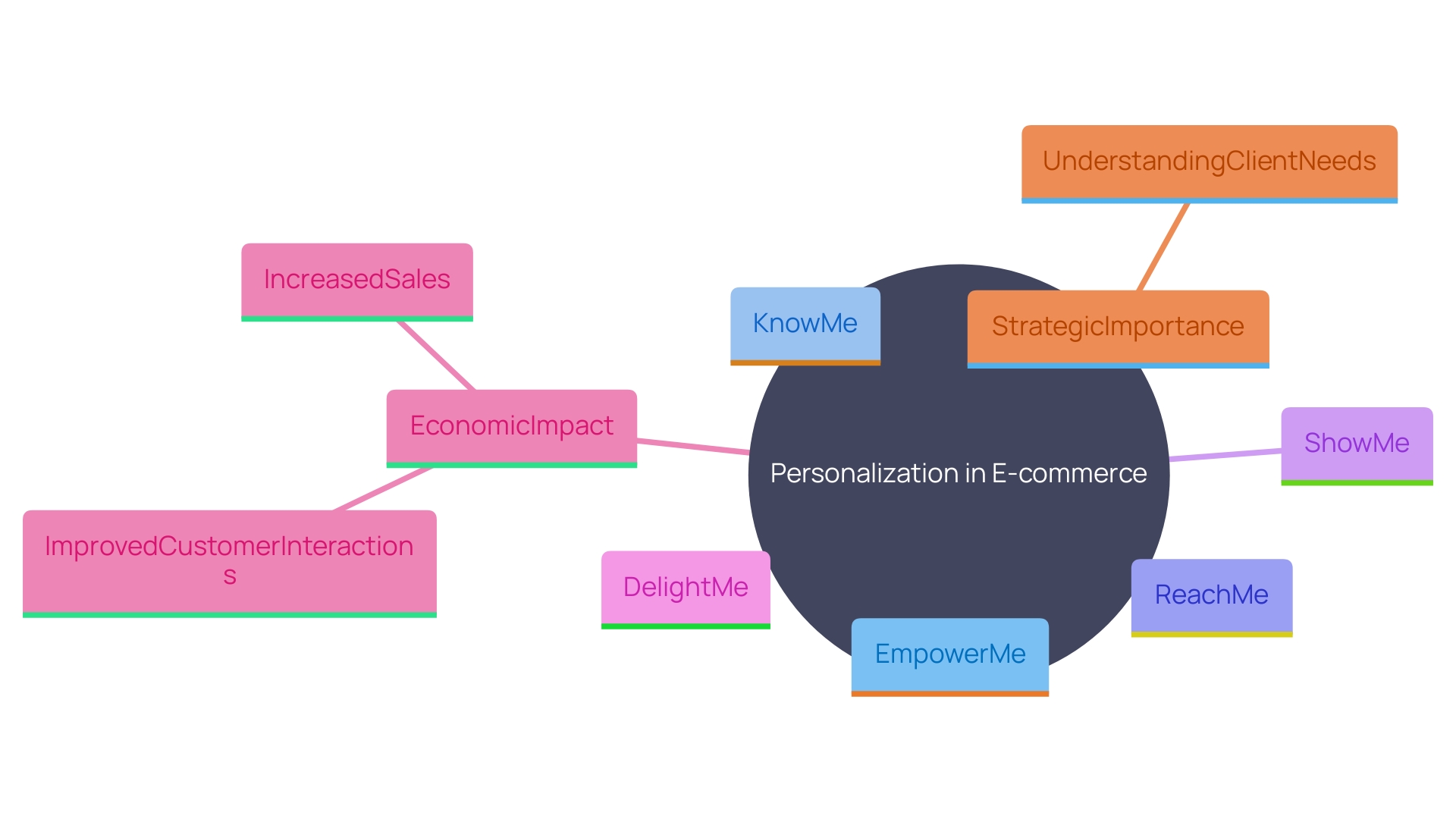
Key Differences Between Personalization and Customization
The difference between customization and tailoring fundamentally centers on control of the user interaction. Customization allows individuals to make choices and adapt products to their preferences, providing a hands-on method for crafting unique items. Conversely, tailoring utilizes information and algorithms to automatically shape the user experience, addressing unique requirements without needing direct input from the client.
Customization is driven by the user, allowing for a highly personalized product that reflects their specific tastes and requirements. This approach is exemplified in scenarios where an individual might choose the color, size, and features of a product, ensuring it meets their unique specifications.
On the other hand, customization is managed by the company, aiming to improve user involvement and contentment through a thorough comprehension of customer behavior and preferences. As highlighted in Gartner's insights on digital commerce, tailoring experiences is akin to a favorite coffee shop remembering your usual order. It creates a sense of familiarity and connection, which is crucial in a crowded market.
In today's rapid digital landscape, tailoring experiences has become a vital objective for companies. It’s about speed—rapidly understanding the client and continuously refining their experience based on evolving data. 'According to BCG’s tailored approach, companies must fulfill commitments such as understanding the customer and pleasing them through sophisticated, individual-focused customization.'. While a few digital-native companies excel in this area, most businesses still struggle to fully realize the potential of cross-channel customization.
The ultimate goal of personalization is to create a competitive edge that is difficult to replicate, fostering a customer-centric culture that prioritizes seamless and instant access to products and services. This continuous loop of interaction not only improves the user journey but also creates a strong, personalized bond between the brand and the buyer.
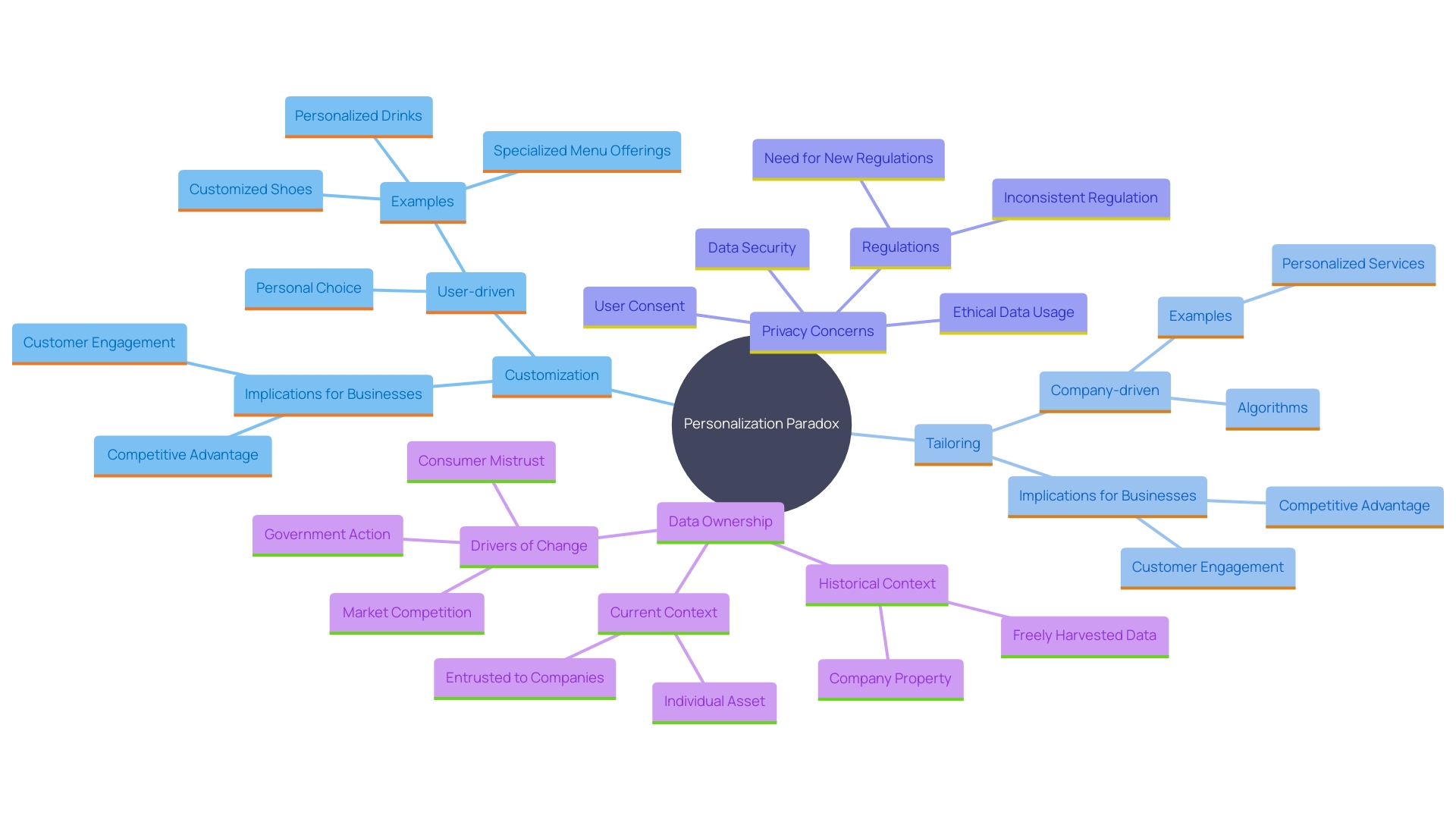
Benefits of Customization in E-commerce
Personalization in e-commerce provides notable benefits, enhancing both satisfaction and loyalty among buyers. According to a recent study by Medallia, 61% of consumers are willing to spend more with companies that offer a personalized experience. This indicates that clients value the sense of ownership and uniqueness that comes with customized products, which enhances their overall satisfaction.
Moreover, customized products often command premium prices, leading to higher sales margins. 'This is especially pertinent in today's digital environment, where tailoring begins with comprehending customer preferences and addressing them where they desire to engage, as highlighted by Elizabeth Tobey, head of Marketing, Digital & AI at NICE.'.
In addition to boosting sales, customization helps differentiate a brand in a crowded market. Shoppers are progressively looking for unique choices, and companies that can provide a high degree of customization stand out. However, there's still room for improvement, as only 23% of hotel guests and 26% of retail consumers report experiencing high levels of personalization, according to Medallia's research. Addressing this gap presents a significant opportunity for brands to enhance client satisfaction and capture more revenue.
Benefits of Personalization in E-commerce
Personalization improves user satisfaction by crafting a shopping journey that feels uniquely tailored to each customer. This approach is akin to walking into your favorite coffee shop where they know your regular order before you even say it. Such familiarity and understanding distinguish enterprises in an increasingly crowded marketplace. According to a report by Gartner®, only 27% of businesses are fully satisfied with their ability to create genuinely tailored experiences, highlighting the significant untapped potential.
The benefits of personalization extend beyond mere convenience. Personalized suggestions that anticipate client needs can lead to higher conversion rates. A personalized strategy speeds up the client journey and continually enhances the experience based on real-time data. This speed and adaptability are crucial in a market where consumers expect instant, seamless service.
Furthermore, customization fosters customer loyalty through consistent and thoughtful engagement. By making every interaction relevant and meaningful, companies can encourage repeat purchases and build stronger, long-term relationships. Firms that thrive in customization establish a competitive barrier that is hard to duplicate, solidifying their standing in the market.
In essence, personalization is not just a trend but a do-or-die business goal. It requires a culture focused on the client, leveraging both human touch and advanced technology to deliver on promises like 'know me,' 'empower me,' and 'delight me.' Such an approach ensures that every decision and interaction is geared towards making the experience the best it can be.
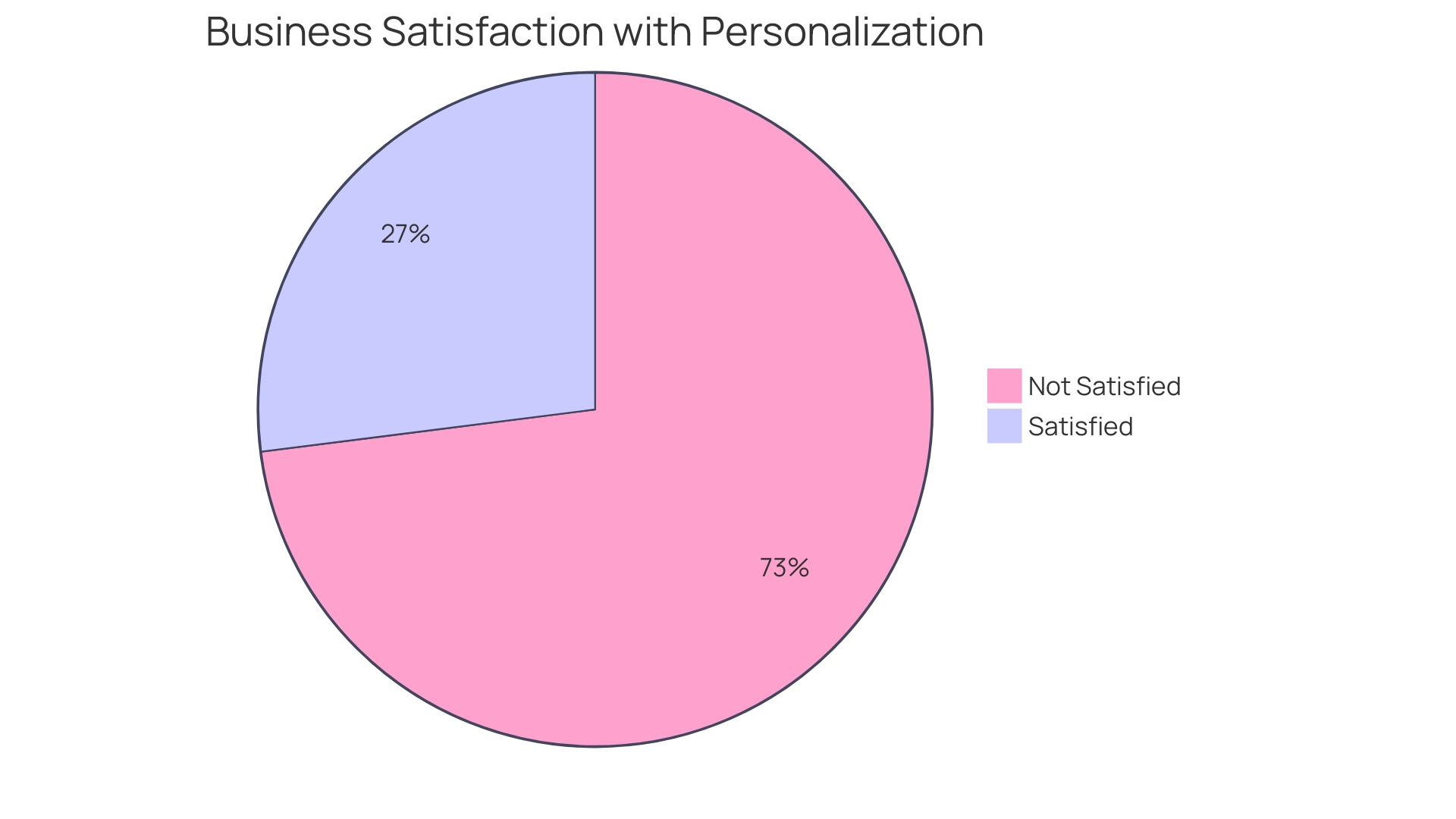
Choosing Between Personalization and Customization: Factors to Consider
When choosing between personalization and customization, companies should carefully assess their target audience, product type, and overall marketing strategy. Personalization often involves creating a connection with the client, much like when a barista knows your coffee order before you say it. This genuine understanding fosters client loyalty and differentiates businesses in a crowded marketplace.
On the other hand, customization enables individuals to tailor products to their exact specifications, offering a unique purchasing experience. For instance, customized shoes or personalized drinks stand out in a market flooded with generic options. This approach can command higher profit margins but may also involve more complex production processes and technology.
As emphasized by a Gartner® report, personalization starts with a culture that prioritizes the client. This means companies need to leverage data and analytics to understand their customers deeply. However, only 27% of companies feel they have effectively used data to create tailored experiences. Therefore, the challenge lies in balancing the personalized touch with the scalability and efficiency of customization.
Companies should also consider the economic environment and consumer spending behaviors. As Forbes points out, customization is one of the leading business trends for 2024, fueled by the necessity for companies to differentiate themselves amid careful consumer expenditure. Ultimately, the decision between tailored experiences and customization should align with the company's strategic objectives and technological abilities, ensuring they can meet client expectations and foster long-term loyalty.
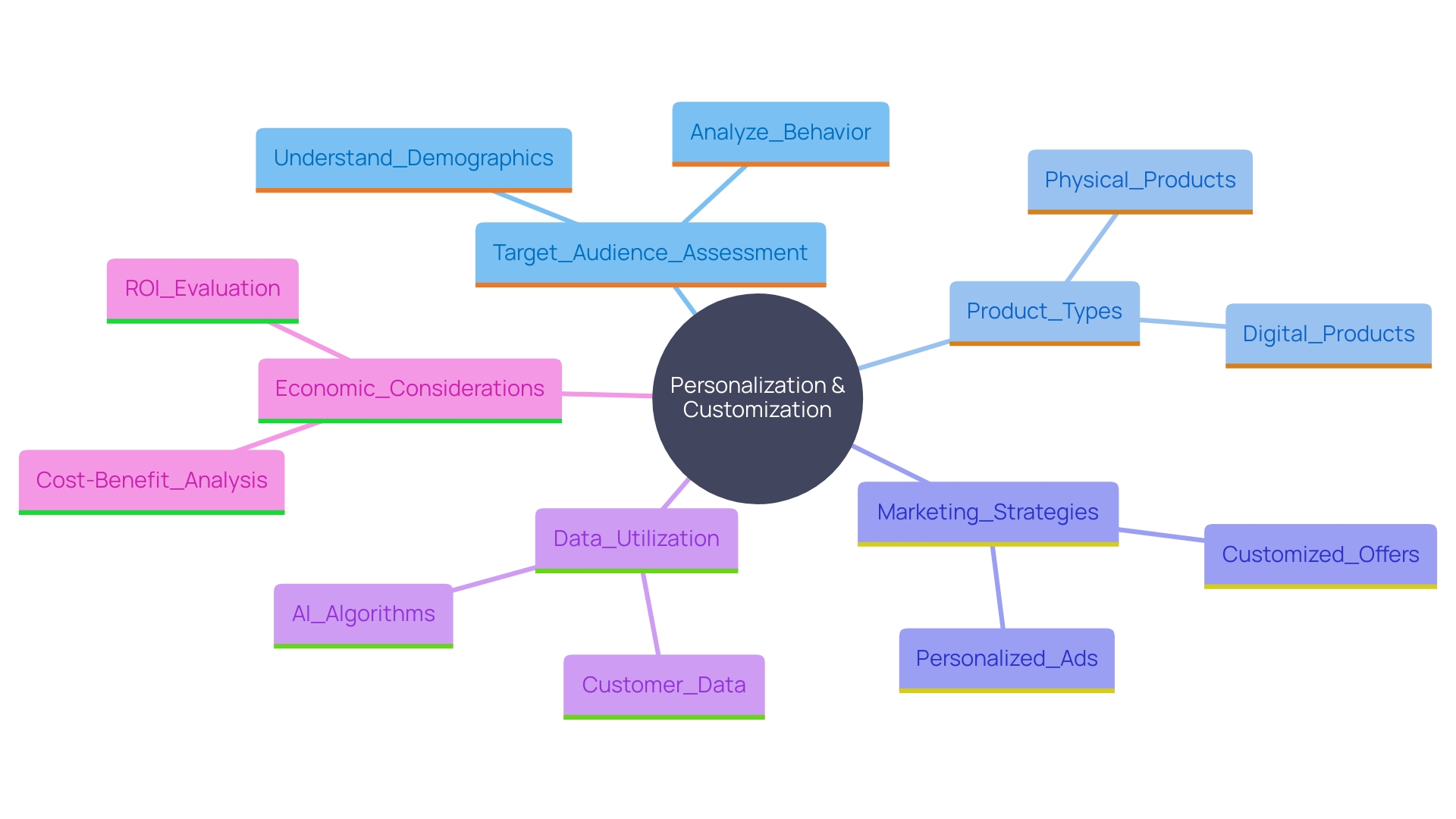
Balancing Personalization and Customization for Optimal User Experience
Finding a balance between tailored experiences and customization can significantly enhance the user experience in e-commerce. By utilizing tailored approaches, companies can steer clients towards customization choices, promoting involvement while enabling personal expression. This hybrid approach not only meets diverse customer needs but also encourages active participation and enhances satisfaction. According to a study by Medallia, 61% of consumers are willing to spend more with companies that provide tailored services, yet only 23% of hotel guests and 26% of retail consumers indicate having high levels of customization. This emphasizes a significant chance for enhancement, as those who see their interaction as highly personalized are more inclined to evaluate their overall satisfaction positively. Furthermore, generating dynamic and engaging content in real-time is essential for effective personalization, though companies must ensure compliance with relevant laws like the Artificial Intelligence Act. By implementing robust data collection and processing systems, businesses can build trust with customers while delivering seamless, contextual, and meaningful user experiences.
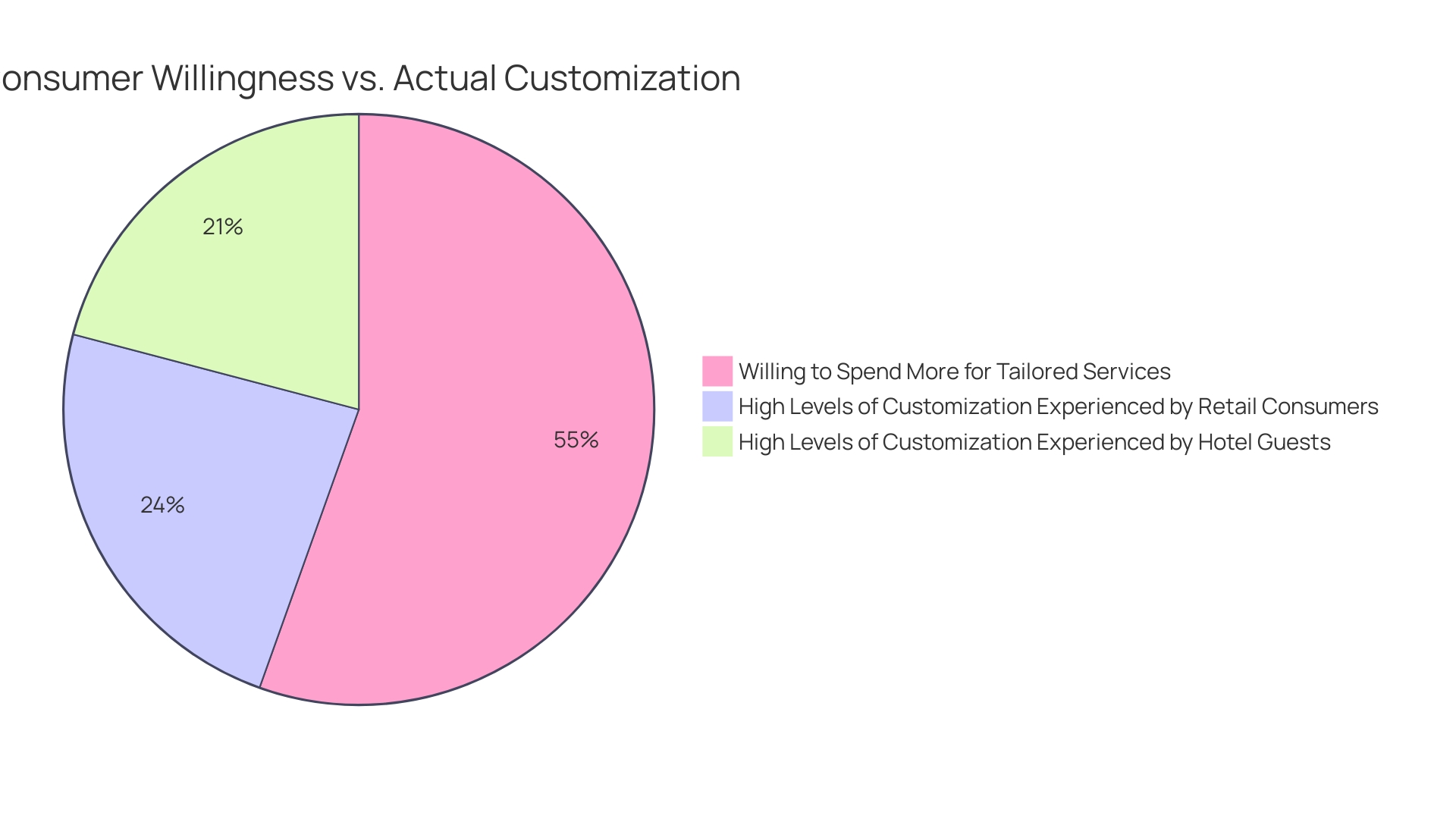
Conclusion
The exploration of customization and personalization in e-commerce reveals their distinct yet complementary roles in enhancing customer experiences. Customization empowers customers to tailor products to their specific preferences, fostering a sense of ownership and uniqueness. This hands-on approach not only satisfies individual tastes but also allows businesses to command premium pricing, thus driving higher margins.
On the other hand, personalization leverages data and algorithms to create tailored shopping journeys that anticipate customer needs. By understanding behavioral patterns and preferences, businesses can deliver relevant recommendations and content, enhancing engagement and satisfaction. This strategic approach is not just about immediate sales; it contributes to long-term customer loyalty and can create a competitive advantage that is difficult for others to replicate.
Ultimately, the decision between customization and personalization should be guided by an understanding of the target audience, product types, and overarching marketing strategies. A hybrid approach that balances both strategies can significantly elevate user experiences, meeting diverse customer needs while encouraging deeper engagement. As the e-commerce landscape continues to evolve, businesses that effectively implement these strategies will be well-positioned to foster lasting connections with their customers and drive sustained growth.





